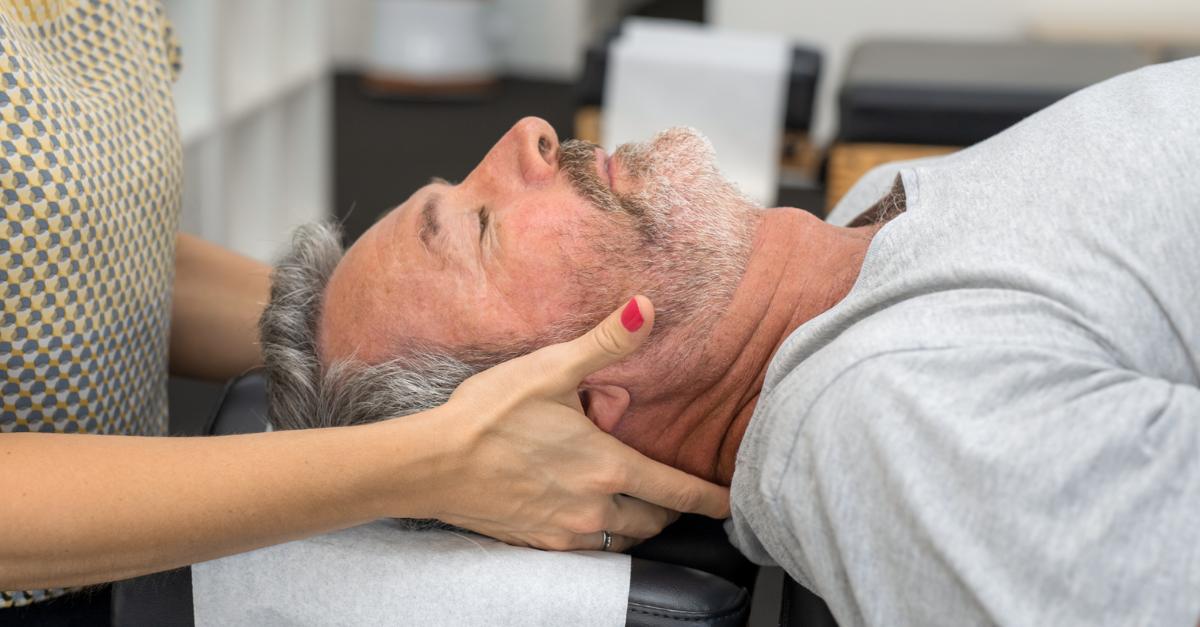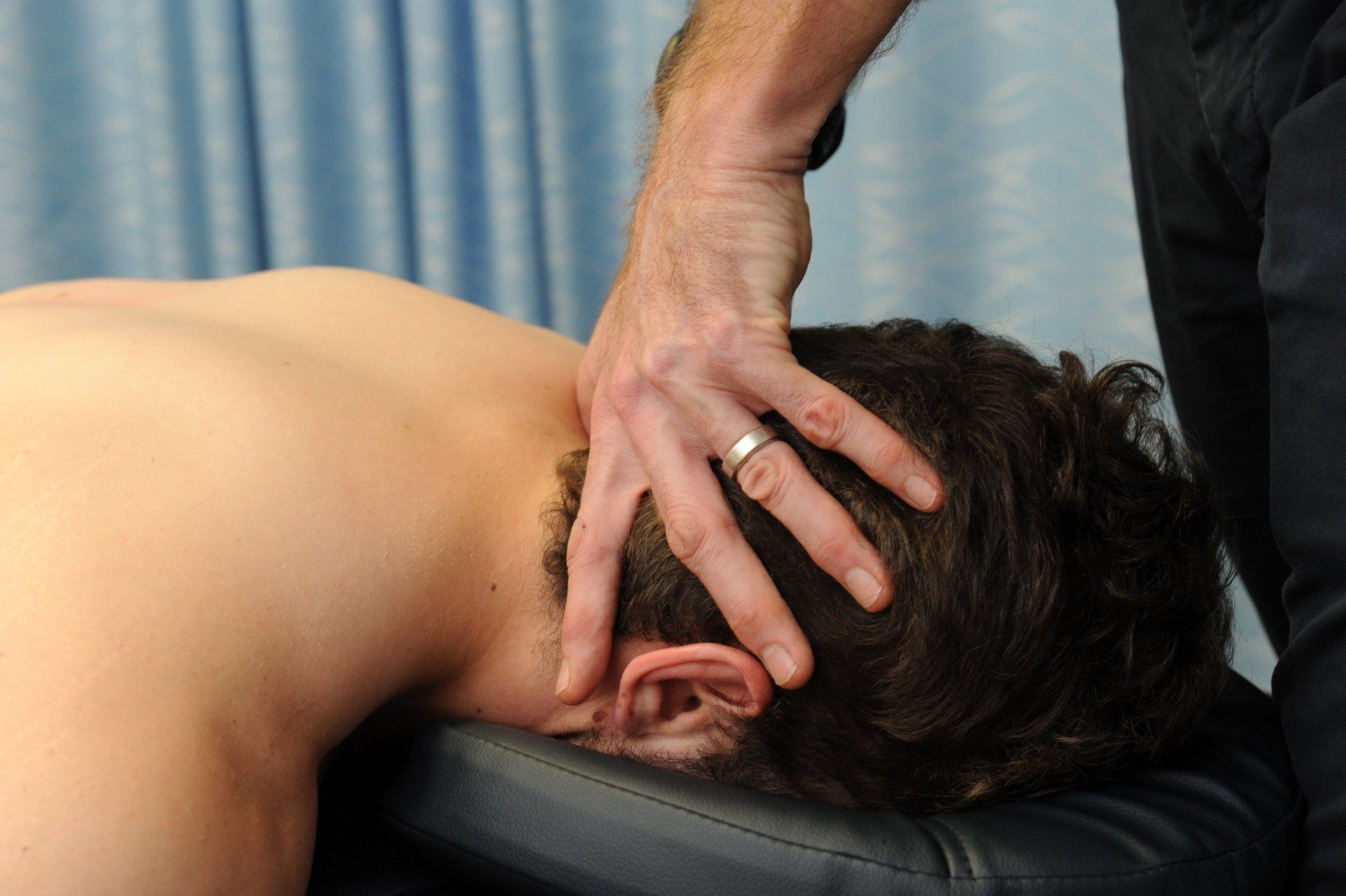Acute Wry Neck
Neck a little twisted and tilted? Get that acute wry neck treated fast.

Acute wry neck, also known as acute torticollis, is a painful medical condition characterized by a twisted or tilted neck. The name comes from the Italian "torti colli", which translates to twisted neck and, in most instances, is a transient condition that responds well to physiotherapy.
It is estimated that at least 90% of people will experience at least one episode of torticollis at some point of their lives.
Anatomy 101
To understand how a acute wry neck occurs, we need to appreciate some of the basic anatomy of the neck and how complex the neck muscles are. Broadly speaking, we have a layer of superficial neck muscles collectively referred to as the long neck muscles, and deep neck muscles (referred to as the paravertebral muscles). With acute wry neck, it is the superficial muscles that are most affected.
While any of the neck muscles can be implicated in a acute wry neck, the main offender is the sternocleidomastoid muscle (SCM). It lies in the front region on either side of the neck and runs from just below the ear to the top of the sternum. It has unique muscle fibres that run obliquely upward and outward allowing it to laterally flex the neck to the same side and rotate to the opposite side (so the left SCM will laterally flex the neck to the left and rotate the head to the right). Working together, both SCM’s flex the neck and play a role in breathing and swallowing.
How did this happen?
The most common cause of a acute wry neck is muscle strain, either from an acute injury or from poor posture. Many people will wake in the morning with a acute wry neck, and so it is common to put the cause down to poor support from a pillow or a cold draft on the neck overnight. While these might contribute to the development of a acute wry neck, the more likely cause is either a strain of a neck muscle (such as might occur with a whiplash injury), a chronic strain from poor posture, or facet joint irritation that results in muscle spasm.
Other causes of a wry neck include:
- Sleeping in an awkward position.
- Infection.
- Repetitive neck movements.
- Neurological conditions.
- Spasmodic torticollis such as dystonia triggered by emotional stress, physical overload, or sudden movement.
- Congenital torticollis.
Managing a acute wry neck.
Physiotherapists bring a wholistic approach to their management of musculoskeletal injuries and use a variety of techniques that have good evidence for their effectiveness, so it's a great place to start if you have a acute wry neck. Physiotherapists are skilled at assessing and diagnosing acute wry necks, and can determine in most cases the cause and refer for further investigations (xray, MRI) or to a doctor if necessary.
People with a acute wry neck can present with a variety of symptoms. Most commonly they will have pain and restricted neck movement, with the head held in a distinctive ‘twisted’ position that is painful to move away from. Other symptoms include:
- Headache
- Dizziness
- Nausea
- Difficulty swallowing
- Shoulder pain
In some cases, acute wry neck may be accompanied by other neurological symptoms such as pins and needles, paraesthesias or upper limb weakness.
Treatment will depend on the underlying cause of the acute wry neck, and that is why a thorough assessment is always required. Rest, heat, soft tissue massage and gentle joint mobilization can be really effective in reducing pain and improving range of motion. Dry needling has also been shown to be effective, particularly in cases where facet joint irritation is implicated. We don't advocate for the use of neck braces as they deload the neck muscles making them weaker and can contribute to increased joint stiffness, potentially prolonging the recovery process.
Patience is required, and a good physio will advise it might take some time to settle pain and regain range of motion.
As symptoms resolve, a tailored exercise program to improve strength and posture for the long term is essential. Surgery is rarely indicated for a acute wry neck, and is typically only considered as a last resort when other treatments have failed to improve the condition. In general, surgery is indicated for wry neck when the underlying cause of the condition is structural or neurological in nature.
How long is it going to take?
Again, this depends on the underlying causes of your acute wry neck, the duration of symptoms and how you respond to treatment. The usual course for a acute wry neck can be a few days to several weeks, while for chronic presentations it could take a few months for symptoms to resolve and exercises to be an effective management tool.
The Take Home.
Acute wry neck is a common presentation that responds well to physiotherapy intervention. Be patient - most acute wry necks resolve nicely within a few days to a few weeks with appropriate treatment. Where treatment is not undertaken, symptoms may resolve however if the underlying causes of a acute wry neck are not addressed, further episodes can occur, with symptoms progressively becoming harder to manage carrying a higher risk of chronicity.
If your looking for some more information on the management of acute neck pain, check out theses perspectives from the Journal of Orthopaedic Sports and Physical Therapy:
- Neck Pain - Clinical Practice Guidelines Help Ensure Quality Care
- Neck Pain - Dry Needling Can Decrease Pain and Increase Motion
Do you have neck pain or a acute wry neck? Give us a call.
We are part of a well-connected network of physiotherapists, massage therapists, doctors and surgeons and can treat and manage your neck pain with a personalised, goal-oriented and comprehensive management plan.
Call now on 08 8945 3799 or click on BOOK AN APPOINTMENT to book online.
Resources:
- Brukner, P., & Khan, K. (2012). Clinical Sports Medicine, 4th Edition
- Neck Pain: Clinical Practice Guidelines Help Ensure Quality Care. J Orthop Sports Phys Ther 2017;47(7):513. doi:10.2519/jospt.2017.0508
- Neck Pain: Dry Needling Can Decrease Pain and Increase Motion. J Orthop Sports Phys Ther 2014;44(4):261. doi:10.2519/jospt.2014.0502
- Shanmugam S, Mathias L. Immediate Effects of Paraspinal Dry Needling in Patients with Acute Facet Joint Lock Induced Wry Neck. J Clin Diagn Res. 2017 Jun;11(6):YM01-YM03. doi: 10.7860/JCDR/2017/26407.10079. Epub 2017 Jun 1. PMID: 28764281; PMCID: PMC5535471.
- Tomczak KK, Rosman NP. Torticollis. Journal of Child Neurology. 2013;28(3):365-378. doi:10.1177/0883073812469294
- Vos, C., Verhagen, A., Passchier, J., & Koes, B. (2007). Management of acute neck pain in general practice: a prospective study. British Journal of General Practice, 57(534), 23-28.








